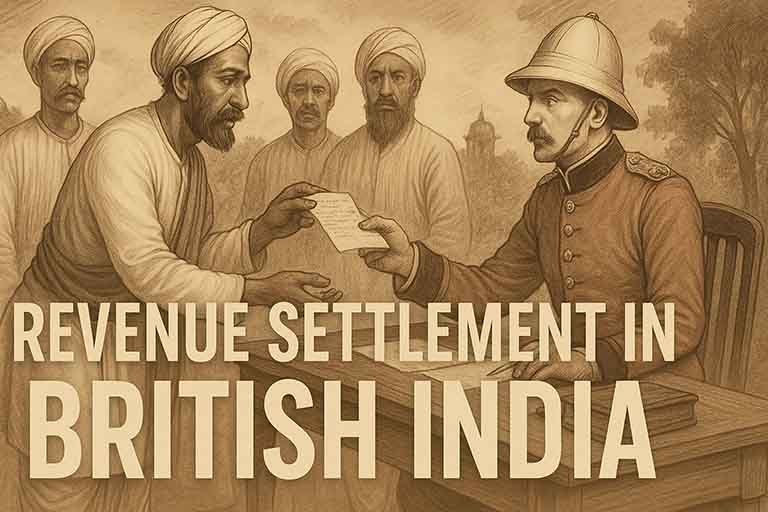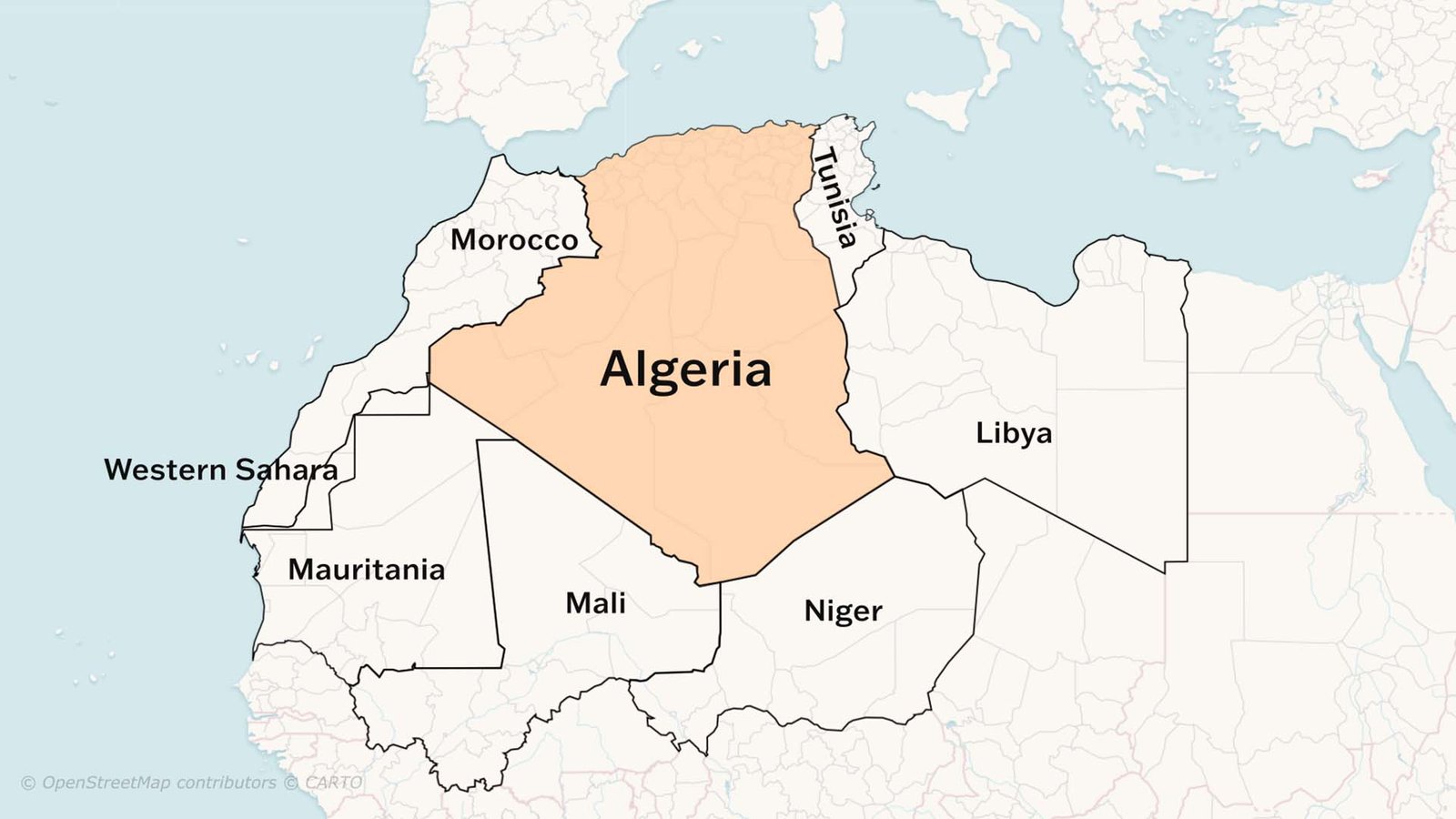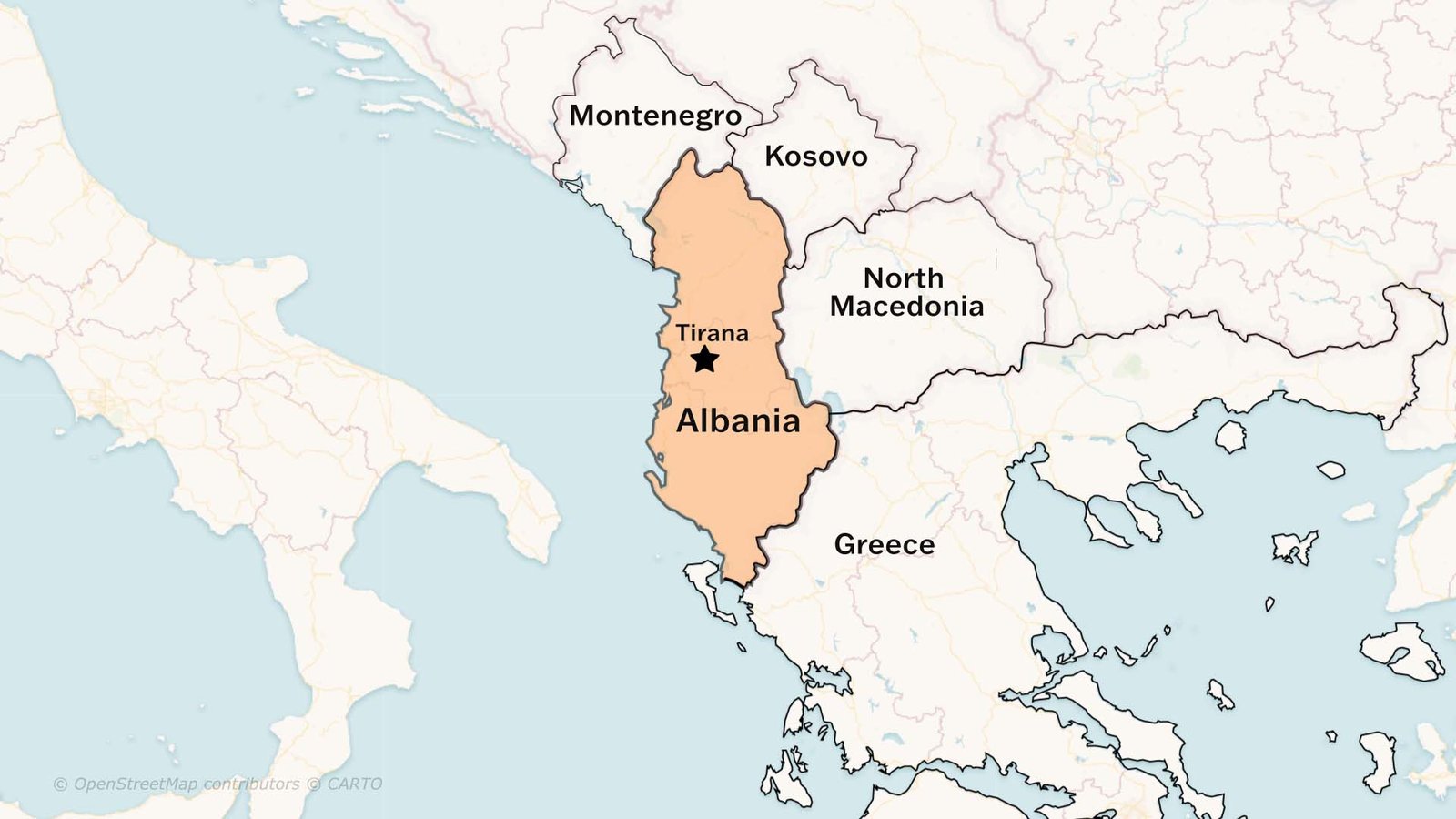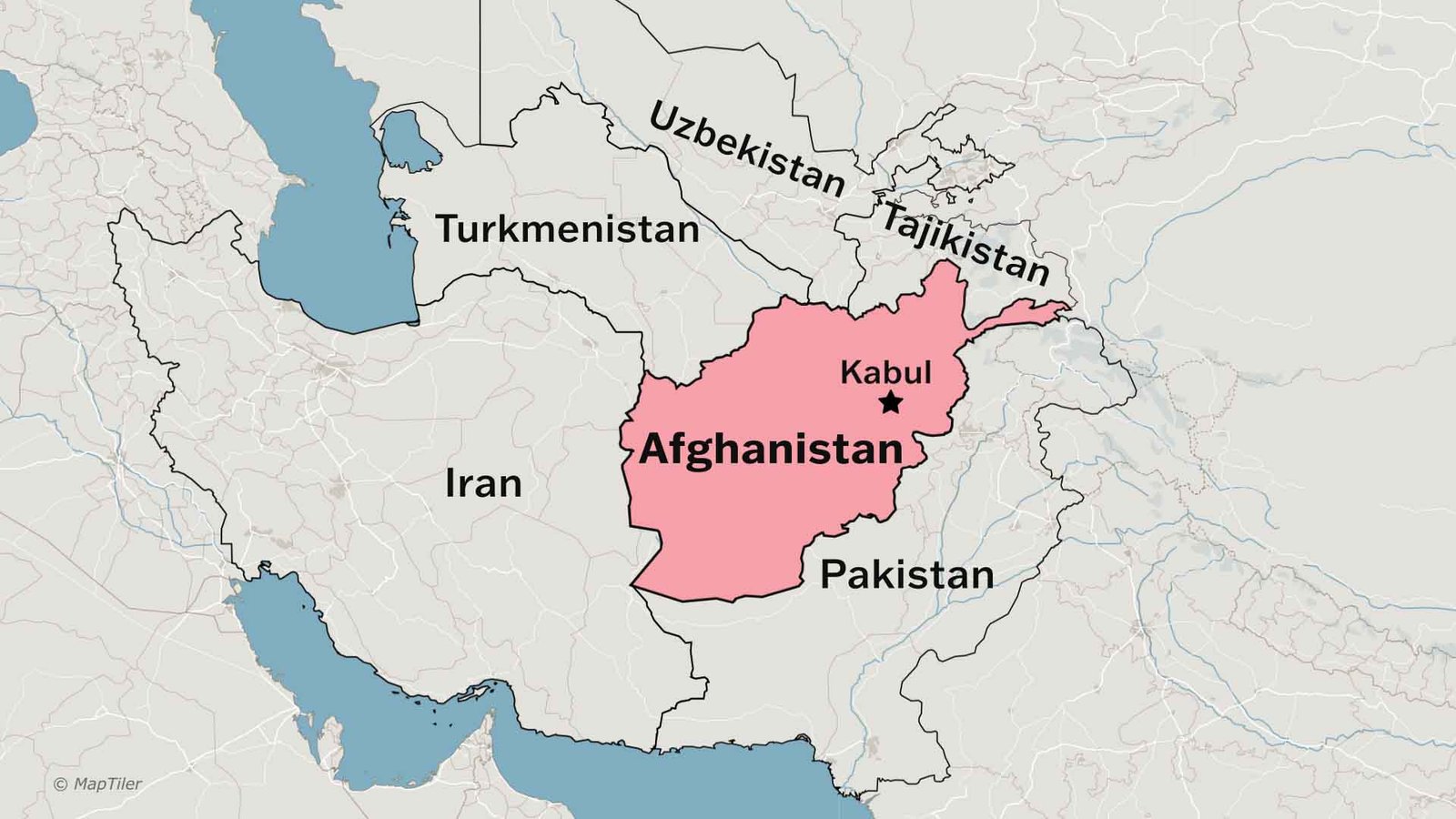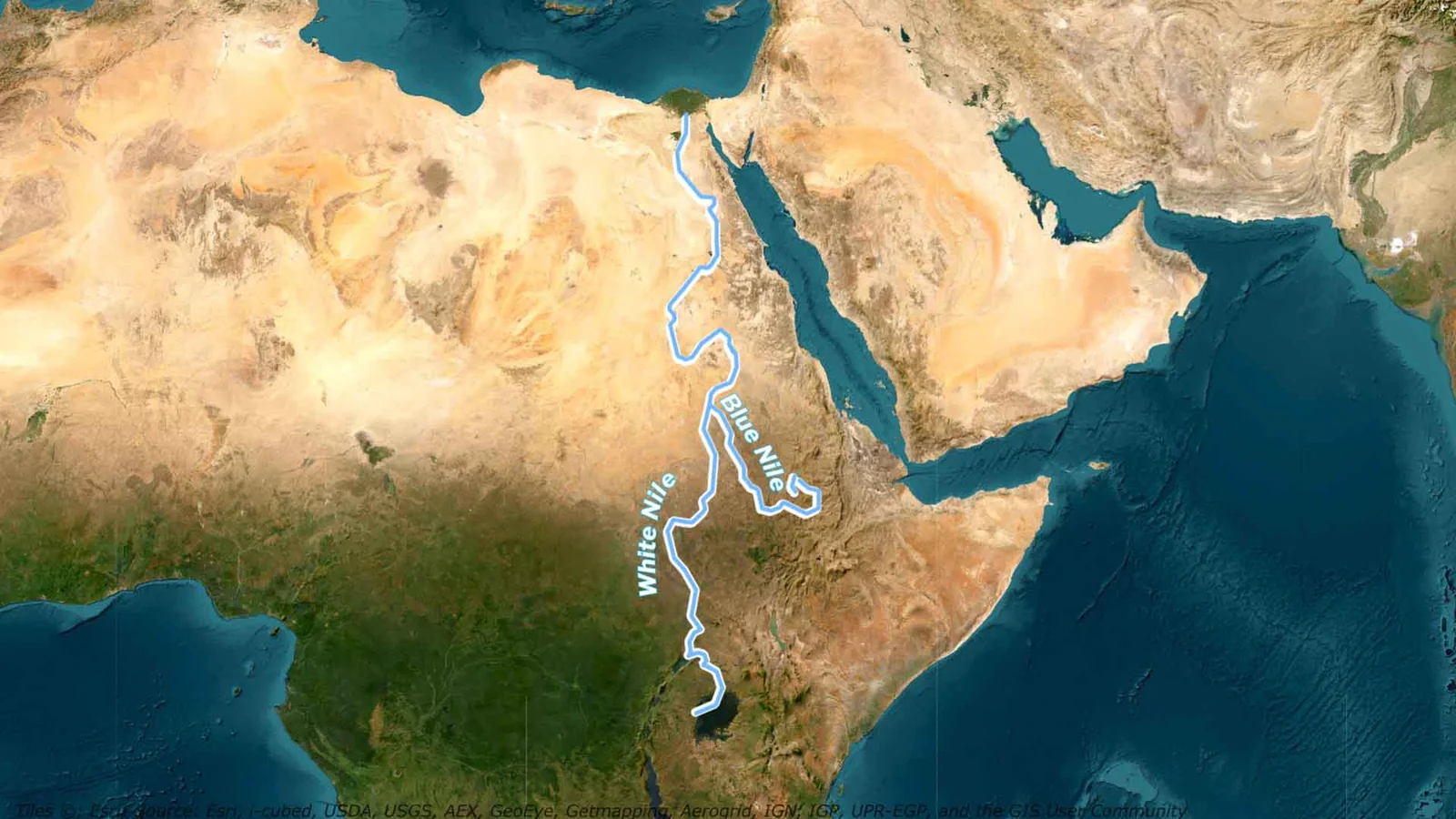In this post, you will learn about different methods of Revenue settlement in British India. In the previous post, we saw how the English East India Company received Diwani Rights after the Battle of Buxar. These Diwani Rights included land revenue and civil justice.
The Company officially became the Diwan of Bengal. Now, the Company wanted to maximise revenue collection while keeping its original purpose of trade in India profitable.
Before 1765, the Company purchased cotton and silk with gold and silver, but after 1765, it no longer needed to use gold and silver for these purchases; the revenue collected from Bengal was sufficient.
So, after the Battle of Buxar and the Treaty of Allahabad, the flow of gold and silver from England to India stopped. Revenue collection became a crucial income source for the Company. This is a fact: if the Company hadn’t received land revenue powers, it might never have ruled such a large part of India.
The Company wanted this revenue source to remain uninterrupted and constant.
In the last video, we saw how the dual government system harmed peasants and artisans, and how the 1770 famine killed one-third of Bengal’s population.
Due to this disaster, another issue arose: the Company’s revenue decreased.
To address this, the Company sought ways to increase revenue collection.
As a solution, Governor-General of Bengal Warren Hastings introduced the Revenue Farming system in Bengal, similar to the Ijarah system, where the highest bidder got the right to collect revenue.
Revenue Farming
In Revenue Farming, many zamindars placed high bids, but the problem was that the Company’s revenue fluctuated yearly. As mentioned earlier, the Company needed a permanent revenue source. The system didn’t provide fixed income since bidders changed annually, and farmers had no incentive to improve cultivation. This system was also exploitative for farmers.
So, in 1793, Cornwallis introduced the Permanent Land Revenue Settlement.
This settlement was between the Company and zamindars, hence also called the Zamindari Settlement.
This system was limited to Bengal, Bihar, Odisha, and the Benaras division in India.
Under this system, the English East India Company identified rajas and taluqdars as zamindars. They collected rent from farmers in exchange for cultivation rights and paid the Company after keeping a portion of the land revenue.
So, how much was the revenue in the Permanent Settlement?
The amount was fixed. Zamindars had to pay ten-elevenths of the total revenue to the English Company, keeping one-eleventh for themselves.
This system was also known as the Sunset Law. Why? The zamindar and Company agreed on a date, and by sunset on that day, zamindars had to pay their collected revenue or dues to the English government. If they failed, they lost ownership of the land. That’s why it’s called the Sunset Law.
Zamindars were those who previously collected land revenue (revenue collectors) and were now made land owners, or zamindars. With land ownership, they could mortgage, transfer, or sell the land. Another issue that made this system problematic was that land rights were hereditary.
Permanent Settlement
In the Permanent Settlement, the revenue paid to the Company was permanently fixed, and the Company would not claim a share of surplus production. The logic was that the Company would get a permanent revenue source, and zamindars would have an incentive to invest in land to increase productivity and earn more. Higher rent meant more profit for zamindars. However, this didn’t happen. The fixed revenue was too high, and many zamindars struggled to pay it, let alone invest in land or make profits. Those who couldn’t pay were stripped of their zamindari.
Some historians believe Cornwallis made a mistake by making zamindars landowners. Others argue he did this deliberately, as collecting revenue from a few zamindars was easier than from millions of farmers. It’s also said that Cornwallis wanted to create a social class of zamindars loyal to the Company in the future.
The government expected the Permanent Settlement to boost agricultural productivity, with surplus not claimed by the government. But how much to invest in land depended on the zamindar’s nature. If the zamindar was good, they invested in land, benefiting both farmers and the Company. If the zamindar was selfish and short-sighted, they avoided investing, leading to low productivity.
This made the system problematic for peasants. A farmer received land from a zamindar for farming in exchange for rent, called a patta. The rent was already high, and if the zamindar defaulted, there was no guarantee the farmer, who had cultivated the land for generations, could keep it. Moreover, fixing the same rent for fertile and infertile land was somewhat unfair.
Mahalwari Settlement
Due to this, in 1822, Holt Mackenzie and R.M. Bird introduced the Mahalwari system in Eastern UP (Agra region), later extended to Punjab and Central India. Geographically, it covered 30% of British India.
Under this system, villages were grouped together and called a Mahal. An individual was appointed to collect land revenue from these Mahals and pay the Company. The collector visited each village, assessed the land’s historical data, patterns, measurements, and quality to fix a figure. The total figure for all village lands was added to determine the amount, but it wasn’t permanent. The system allowed periodic surveys to revise the amount.
Unlike the Permanent Settlement, the revenue wasn’t fixed and was revised every 20-30 years. This system was somewhat similar to the Zamindari system, but the amount wasn’t fixed. Hence, the Mahalwari system was also called the ‘Temporary Zamindari Settlement.’
So far, we’ve learned about land revenue collection in North India. Now, let’s shift focus to South India.
Ryotwari Settlement
In South India, Governor-General of Madras Thomas Munro and Alexander Reed introduced the Ryotwari Settlement in 1820, implemented in Bombay and Madras, and later extended to Sindh, Berar (Eastern Maharashtra), and parts of Assam. This scheme covered about 51% of British India.
What were the features of the Ryotwari Settlement?
The Ryotwari Settlement was made with peasants, also called Ryots, hence the name Ryotwari Settlement.
Another feature was that peasants were issued a ‘patta,’ confirming their ownership rights.
In this settlement, the revenue rate was very high. In some places, like Madras, peasants had to pay 51% of the standard production. The revenue wasn’t fixed and was revised every 20-30 years.
Impact of British Land Revenue Policy
Earlier, in ancient times, farmers paid only one-sixth of revenue, around 16%.
Later, in medieval times, they paid one-third of revenue based on actual production. Actual production meant that if output was high in a year, more revenue was paid. If unforeseen circumstances like floods, famines, or natural disasters reduced output, paying revenue wasn’t mandatory. There was also a loan provision called ‘Taccavi,’ and with these provisions and their ownership, peasants felt secure.
But in British India, revenue was based on standard production, meaning even if production was low or absent due to disasters, the same revenue had to be paid.
As a result, peasants mortgaged land to take loans, falling into a debt trap. Sometimes, they had to sell their land, becoming landless.
British land revenue policies were highly exploitative and largely ruined Indian farmers.
In the Zamindari Settlement, the biggest problem was the chain of middlemen. Sometimes, there were 50 middlemen between the farmer and zamindar, leading to significant exploitation. More middlemen meant more exploitation.
The actual zamindar often left the land to live a better life elsewhere, appointing someone else to collect revenue. Gradually, these middlemen also appointed others, creating a chain of middlemen. This was called ‘Absentee Landlordism.’
Peasants couldn’t pay such high revenue and began cultivating cash crops like cotton and jute instead of staple foods like wheat and rice to earn money for revenue. This turned agriculture into a commercial business.
In the Ryotwari system, the revenue rate was very high. If a farmer couldn’t produce output, they had to mortgage land to money lenders to pay revenue, falling into a debt trap and sometimes selling their land.
Once sold, the land went from cultivators to non-cultivators, leading to the commercialization of agriculture. This meant a shift from ‘cultivation for consumption’ to ‘cultivation for market.’ Farmers who grew wheat and rice for consumption now grew cash crops like cotton and jute for the market. Since the British demanded revenue in cash, farmers were forced to grow cash crops like sugarcane, jute, and cotton. Thus, agriculture became a commercial business.
To sell these cash crops, farmers relied on merchants, who bought them at low prices, further exploiting the farmers.
Another reason for the commercialisation of agriculture in India was England’s Industrial Revolution. As industries and factories grew in England, the demand for cash crops increased, and cash crops produced in India were supplied to England’s factories and industries. The British government deliberately made policies to incentivize farmers to cultivate cash crops and expand their area.
Due to these reasons, market behaviour became highly lawless and erratic.
Read more: Revolt of 1857
Watch Now: The Advent of Europeans in India

